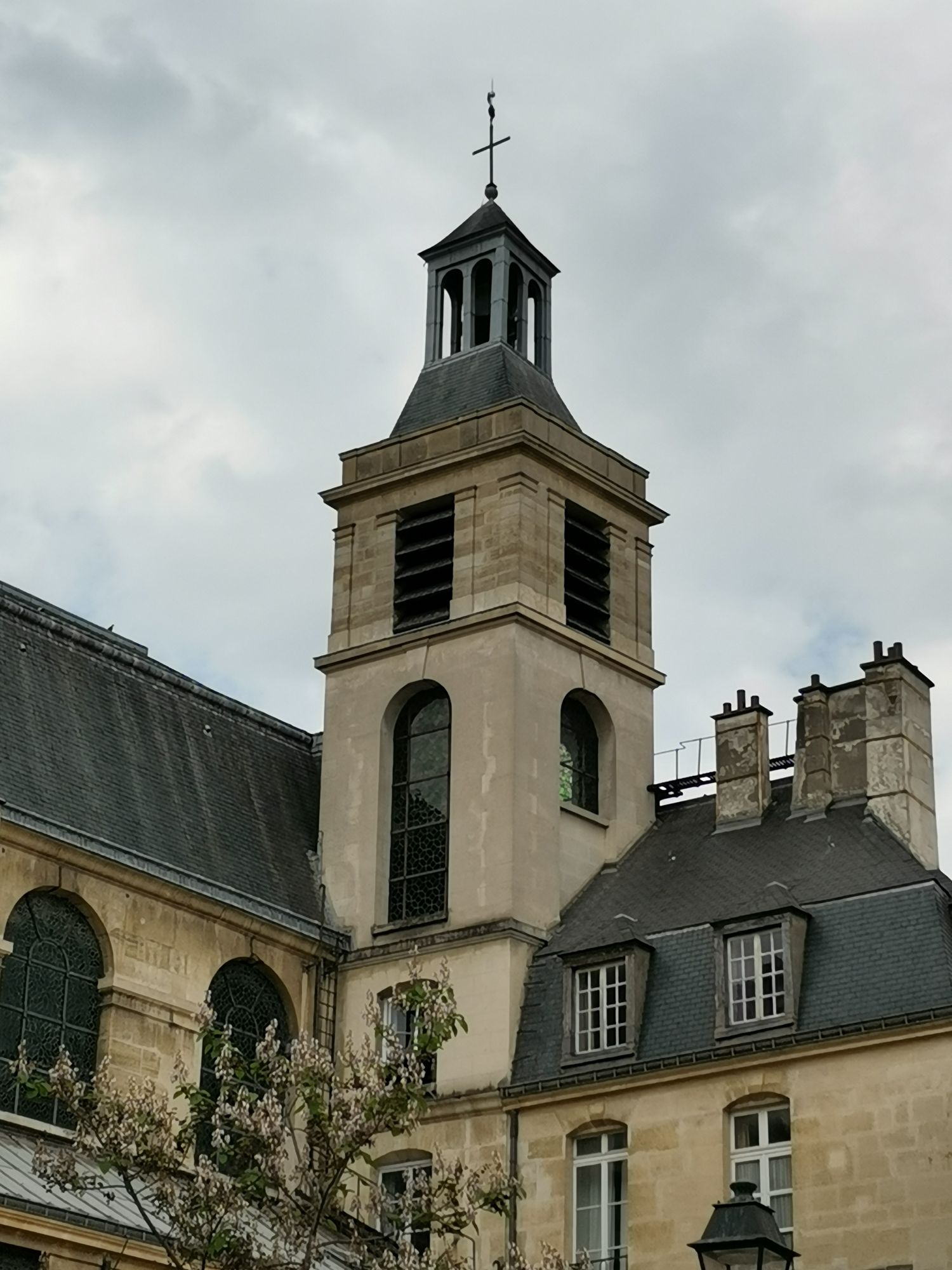Church of Les Blancs-Manteaux
 Also known as l'église Notre-Dame-des-Blancs-Manteaux.
Also known as l'église Notre-Dame-des-Blancs-Manteaux.The present church dates from the late 17th century and replaced an earlier church, the church of the Blancs-Manteaux monastery.
It was erected in the 13th century by order of the servants of the Blessed Virgin at the request of Chevalier Pierre Luillier and his wife Mahaut Boucher d'Orsay.
This Catholic church, dedicated to the Virgin Mary, is a landmark with a rich past and impressive architecture. Let's delve into the history of this sacred monument, witness to centuries past.
Where is the Eglise des Blancs-Manteaux?
Address: 12 rue des Blancs-Manteaux 75004 Paris
The origins of the “Blancs-Manteaux” church
The history of the Church of Notre-Dame des Blancs-Manteaux dates back to 1258, when the “Servants of the Blessed Virgin” took up residence at the request of Chevalier Pierre Luillier and his wife Mahaut Boucher d'Orsay. These servants, dressed in black robes and white mantles, were nicknamed the “Blancs-Manteaux”, from which the vernacular name of the church derives. Their mission was to serve the Virgin Mary, to whom the church is dedicated.
Over the years, the Marais district grew up around this church, and its influence spread. In 1274, the Second Council of Lyon put an end to the Order of the Servants of the Blessed Virgin, and its members joined the Order of Saint-Guillaume, known as the “Guillemites”. The name of the neighboring rue des Guillemites thus has its origins in this religious history.
Historical milestones
The Church of Notre-Dame des Blancs-Manteaux has witnessed many significant historical events. In 1407, the body of Duke Louis I d'Orléans, brother of Charles VI, was laid to rest here after his assassination at the corner of rue Vieille-du-Temple by Jean-sans-Peur's men.
Over the centuries, the church has undergone periods of closure and renovation. In 1618, Cardinal de Retz closed the Blancs-Manteaux monastery due to “great disorder”. The second church was built between 1685 and 1690, under the priorate of Antoine de Machy, to plans by Charles Duval. The monks were expelled during the French Revolution, and the buildings were sold as national property. The pawnshop then annexed part of the former convent buildings.
The Renaissance and Conservation
After these tumultuous times, the church was bought back by the city of Paris and returned to worship under the Concordat of 1801. It became a parish church in 1807. The south facade, added by Victor Baltard in 1863, comes from the church of Saint-Éloi-des-Barnabites, demolished during Haussmann's construction of the Boulevard du Palais on the Île de la Cité. This façade was built in 1705 by Cartaud.
In 1929, the monastery's former fountain, dating from 1719, was reassembled against the church's east wall, adding a further touch of history to this sacred site.
A Classified Treasure
The Church of Notre-Dame des Blancs-Manteaux is the last vestige of the original monastery. It and its crypt, along with the remains of the monastery, were classified as historic monuments on November 14, 1983. This recognition underlines the importance of preserving this place steeped in history and spirituality for future generations.
L'Église des Blancs-Manteaux: Un Écrin de Culture
In addition to its rich religious heritage, the Église Notre-Dame des Blancs-Manteaux is also a place of culture. In June 2023, it hosted two concerts by the Ensemble Vocal Aracana. These concerts combined music and perfume, in partnership with Bon Parfumeur. Visitors had the opportunity to enjoy choral works by composers such as Fauré, Rossini, Rutter, Franck and others, in a celestial, feminine and oriental atmosphere, corresponding to different fragrances. These cultural events showcased the beauty and versatility of the church, which continues to play a significant role in the cultural life of Paris.
Back to the list of churches and synagogues in the Marais



